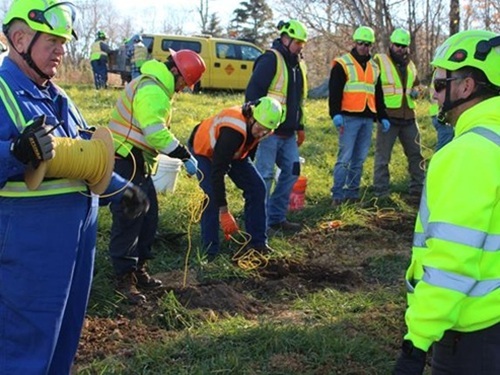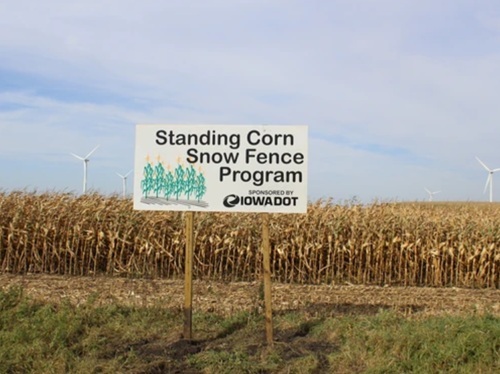As winter approaches, the Iowa Department of Transportation highlighted the benefits of its Standing Corn Snow Fence program; an initiative started 40 years ago that not only helps keep state roadways free of snow drifts but that provides environmental and economic benefits as well.
[Above photo by the Iowa DOT]
The agency said in a blog post that it has worked with Iowa farmers since the 1980s to leave rows of standing corn – sometimes even round bales – along highways in open, wind-prone areas.
Such natural cornstalk “wind blocks” slow down blowing snow and reduce severe drifting across rural roads, Iowa DOT explained; helping keep roads open and drivable on the worst of winter days, while also providing a valuable shelter for wildlife.

Participating farmers agree to leave six to 24 rows of corn standing along roadways – typically located 100 to 200 feet or more to provide adequate drift formation through the winter. In return, Iowa DOT pays them based on assumed yield using the statewide average cash price on August 1 each year plus $2.00 per bushel. For 2025, the Iowa DOT is paying $5.75 per bushel.
The agricultural barrier is a win-win for Iowa DOT and farmers in several ways, the agency said. Not only does it help Iowa DOT reduce snow removal costs and provide farmers with fiscal compensation, cornstalk wind blocks help prevent soil erosion – with the trapped snow eventually melting and increasing soil moisture for the next planting season.
“Studies show that plowing snow costs 100 times more than trapping it with a snow fence, so these partnerships really pay off,” noted Craig Bargfrede, Iowa DOT winter operations administrator – noting that the savings comes from lower salt use, fewer truck trips, and less fuel consumption.
“Farmers who participate in the program are performing a valuable public service because these snow fences can also help maintain clear roadways for their communities by capturing blowing snow upwind of a problem area and storing that snow over the winter season,” he added.
 States
States
NCDOT Staff Participate in ‘Explosive’ Technical Training
December 19, 2025 States
States

